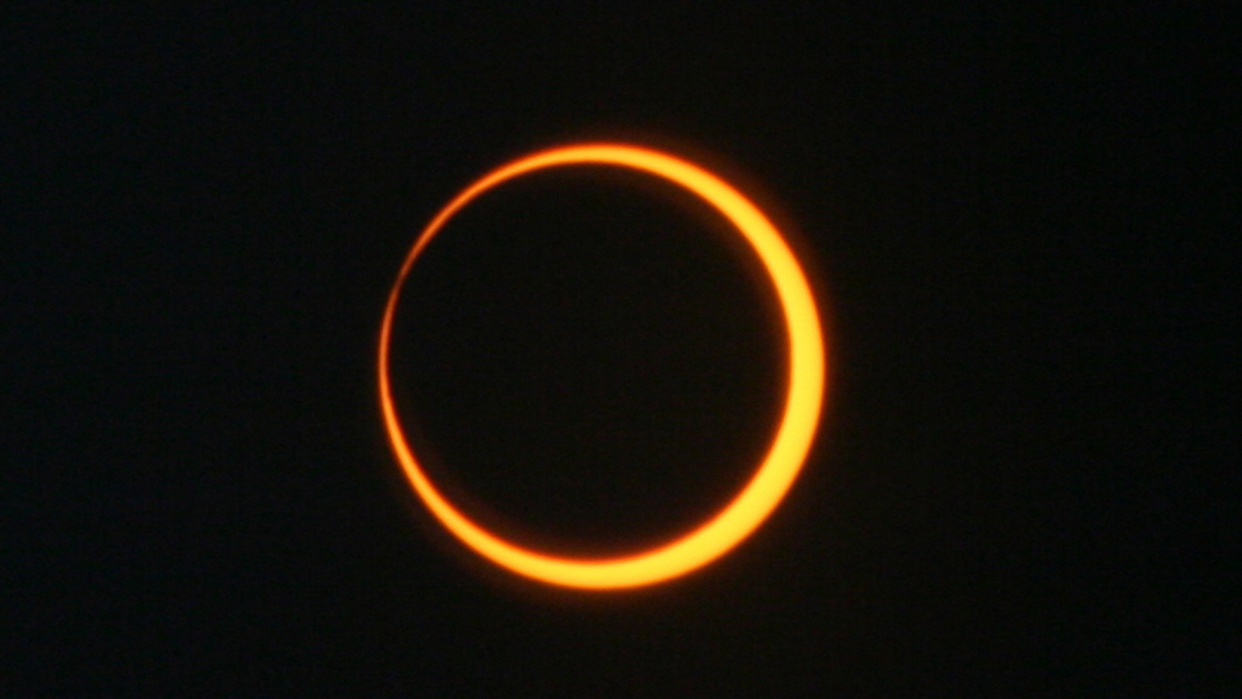Get ready for the epic 'ring of fire' annular solar eclipse of October 2023 with this epic NASA trailer (video)

Get excited. We're just about a month away from this year's annular solar eclipse.
On Saturday, Oct. 14, 2023, a "ring of fire" annular solar eclipse will sweep across a 125-mile (200-kilometer) wide path that stretches from the northwestern United States through Central America and into Brazil. Even regions in the Americas outside of the path of the total eclipse will be able to see a partial solar eclipse, too, if weather conditions are right.
An annular solar eclipse happens when the moon appears relatively small in the sky, and thus does not fully cover the sun during a solar eclipse, leaving a thin outer ring of sun visible often called a "ring of fire."
Eclipse fans can now start to prepare for the event by watching NASA's epic new trailer that builds excitement for the first "ring of fire" to be visible in the U.S. since 2012.
Related: Annular solar eclipse 2023: Everything you need to know about North America's 'ring of fire' eclipse

The moon's orbit around our planet is a flattened circle, or an ellipse, which means sometimes it is closer to Earth, or at perigee, and other times it is further away, or at apogee. Eclipses happen when the moon is in its new moon phase, meaning its face is completely dark and it rises and sets with the sun. During total solar eclipses, the moon is close to Earth, and the completely dark lunar disk is large enough to cover the entire sun, darkening the sky over Earth.
But annular eclipses happen when the moon is at apogee. Because it is further away, it appears slightly smaller in the sky. That means the lunar disk doesn't completely obscure the sun, it instead leaves the edges of our star "poking out" from behind the moon, thus creating the effect of a blazing golden ring of fire in the sky. This also doesn't cause a complete darkening of the sky.
Like all eclipses, the Oct. annular eclipse can only be seen from select regions of the planet because the moon is so close to Earth that where it appears in the sky depends on where an observer is located across the globe.
During the Oct. 14 annular eclipse, the moon will cover 91% of the sun, and the ring of fire that this gives rise to will be visible from Oregon through northern California, northeast Nevada, central Utah, northeast Arizona, southwest Colorado, central New Mexico, and southern Texas, all of which are in the 118 to 137-mile (190 to 220 kilometer) wide "path of annularity" of the eclipse.
Outside the U.S. the annular eclipse will also be visible from Mexico, Guatemala, Belize, Honduras, Nicaragua, Costa Rica, Panama, Colombia, and Brazil. The ring of fire will last its longest, around 5 minutes and 17 seconds, when seen from off the coast of Nicaragua and Costa Rica.
RELATED STORIES:
— Which U.S. states will October's 'ring of fire' solar eclipse be visible from?
— 'Ring of fire' from US national parks: 7 great places to see the annular solar eclipse 2023
Skywatchers who wish to travel so they are in the path of the annular eclipse in Oct. rather than catching it online can refer to an interactive map created by eclipse expert French eclipse Xavier Jubier, available here.
NASA has its own map of the eclipse available here, which also includes a map of the total solar eclipse that will cross North America, including the U.S., Canada, and Mexico, on April 24, 2024.
Being off the path of the ring of fire — more formally an annular eclipse — or being outside of North America entirely doesn't necessarily mean missing out, however. Skywatchers anywhere in the world can watch the annular eclipse online and for free as it is live-streamed by NASA on its YouTube channel.
The livestream starts on Oct. 14 at 11:30 a.m. EDT (1530 GMT) and ends at 1:15 p.m. EDT (1715 GMT). It will also stream on NASA's website and the space agency's app.

